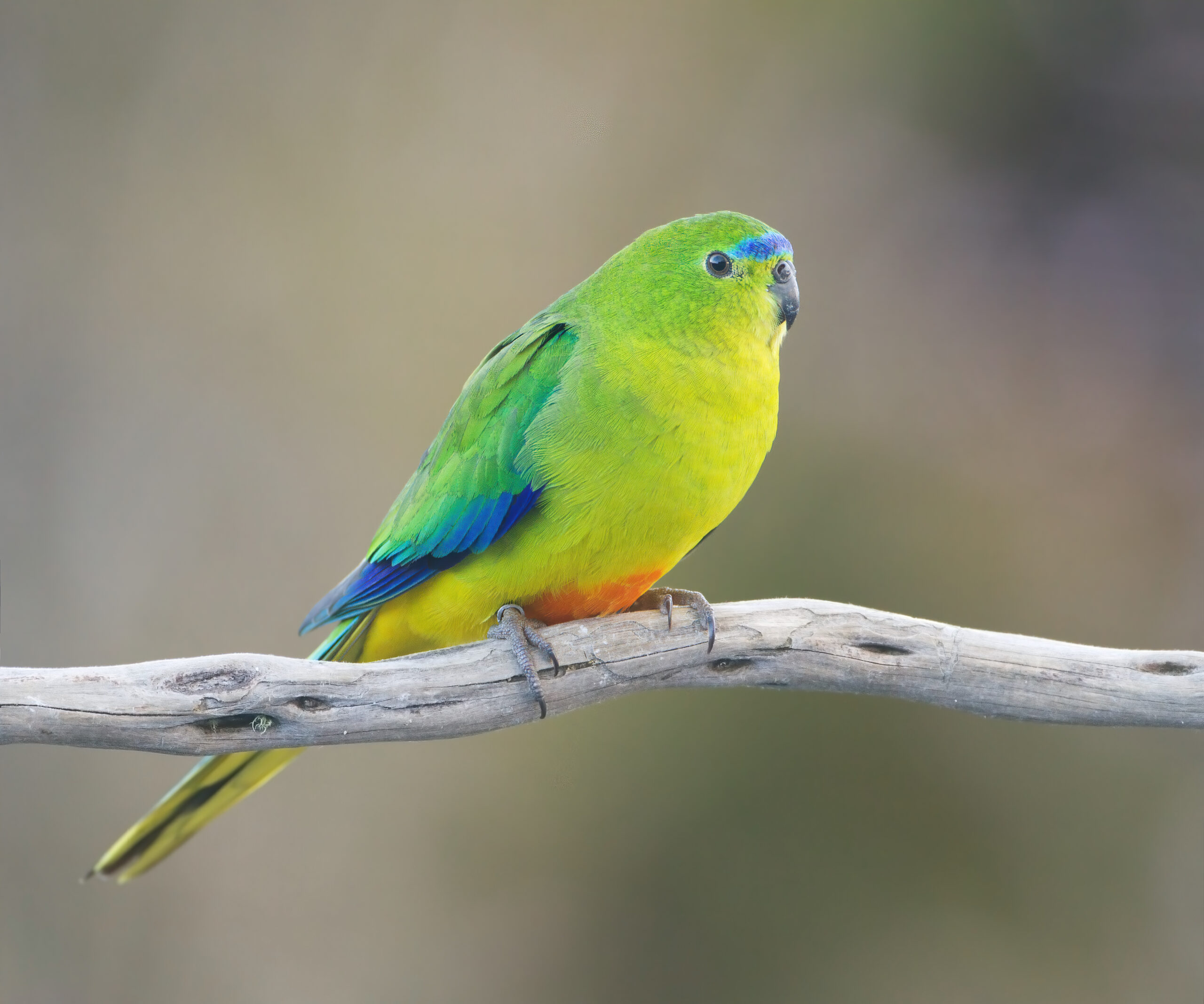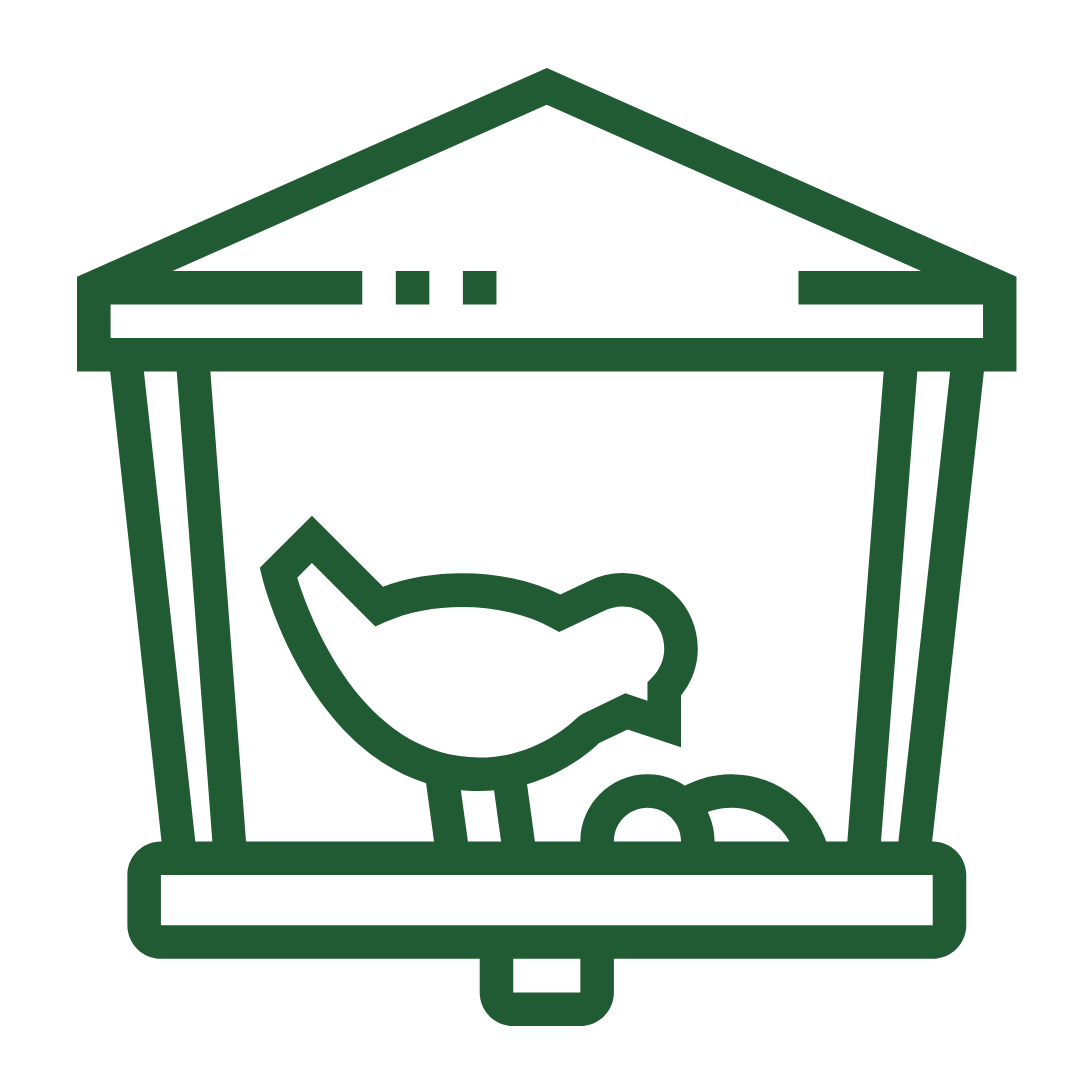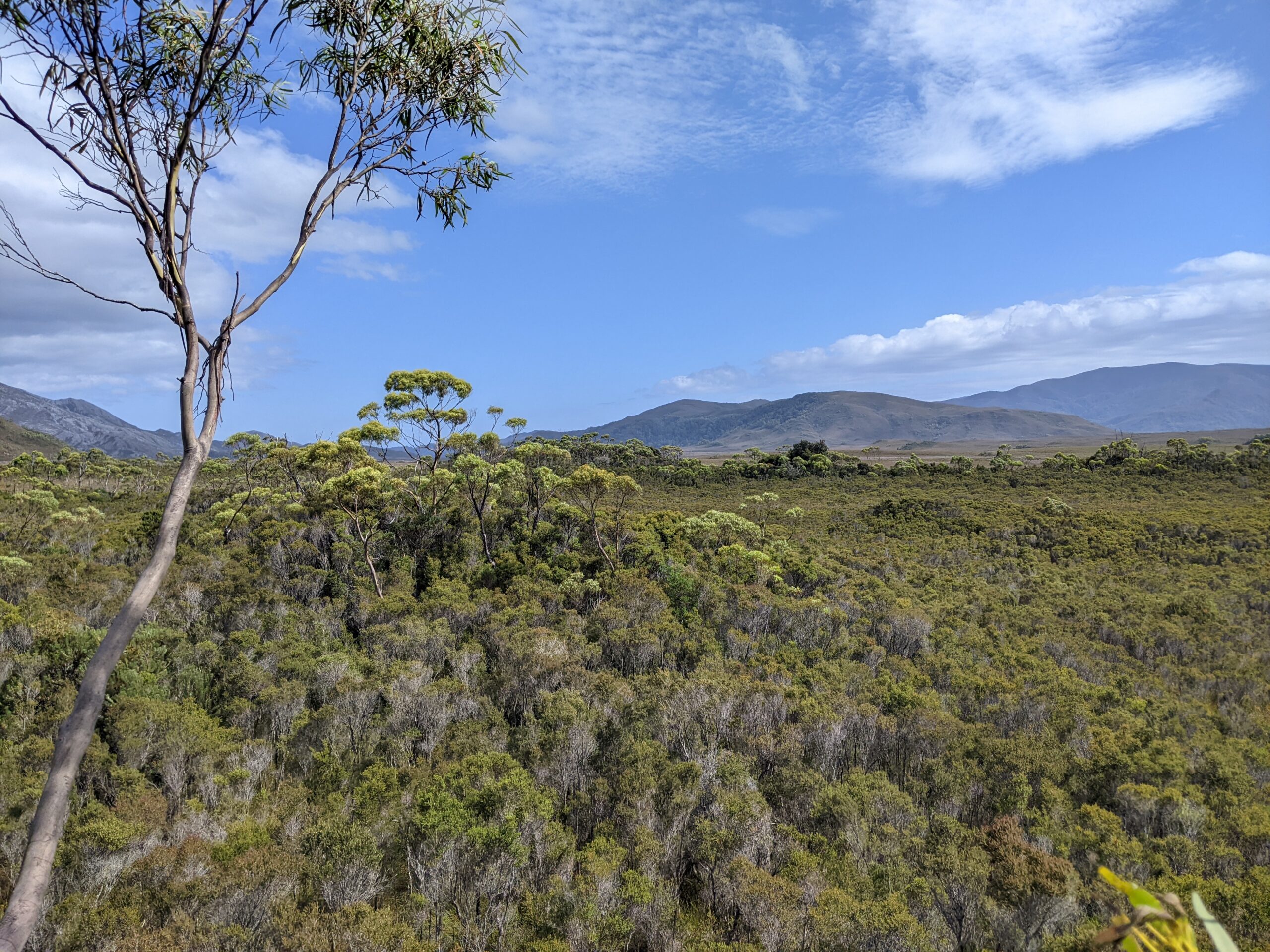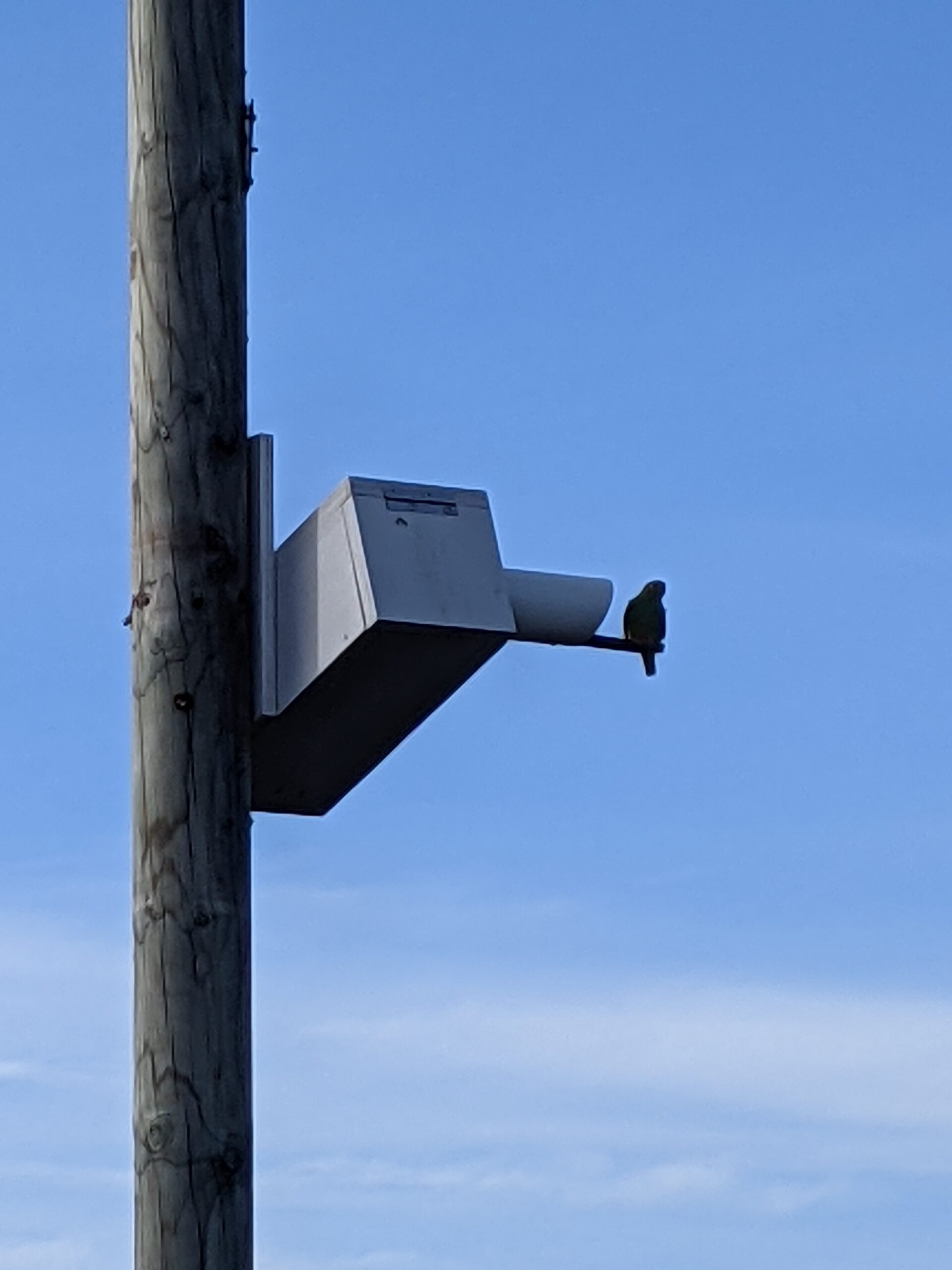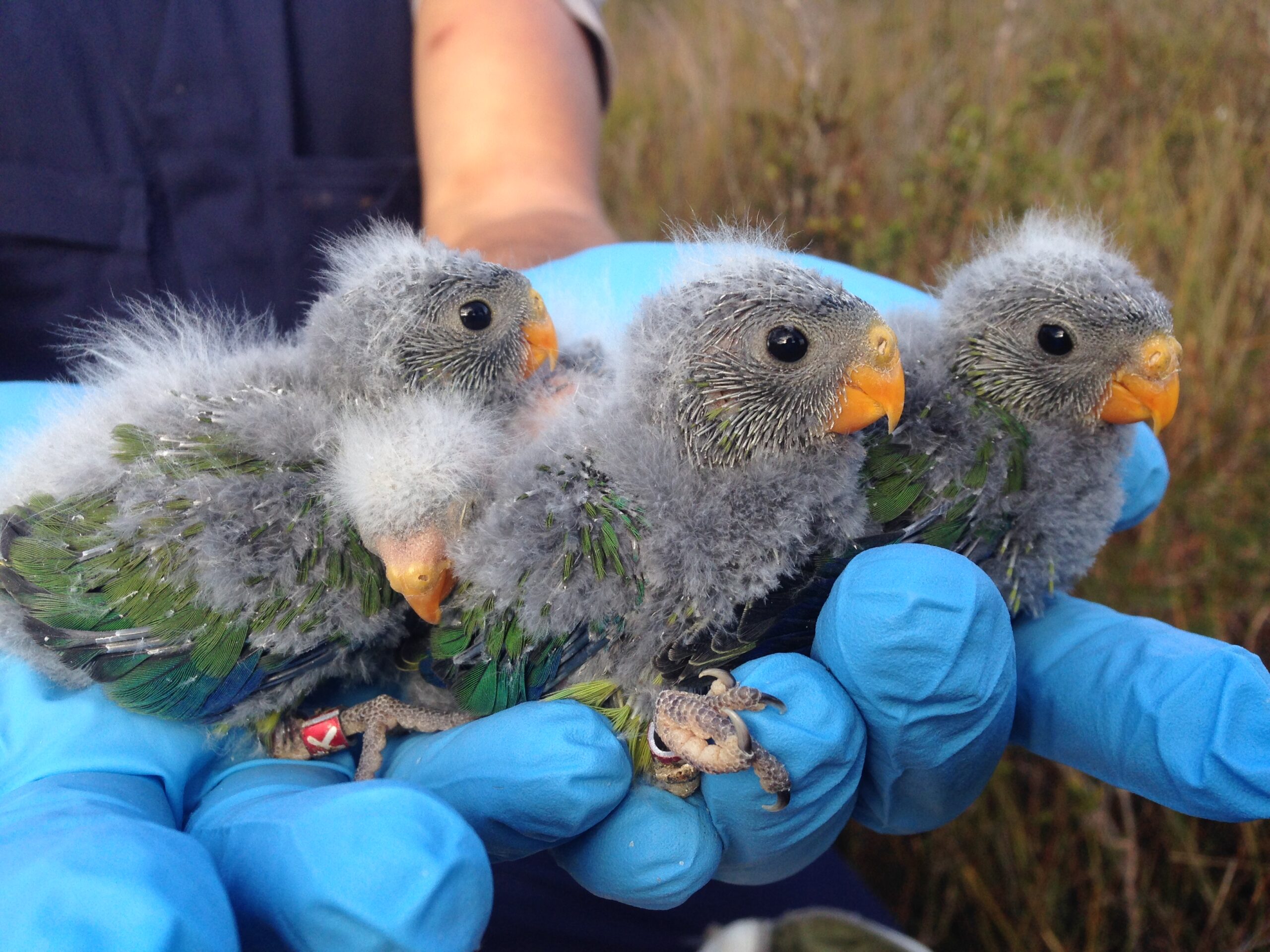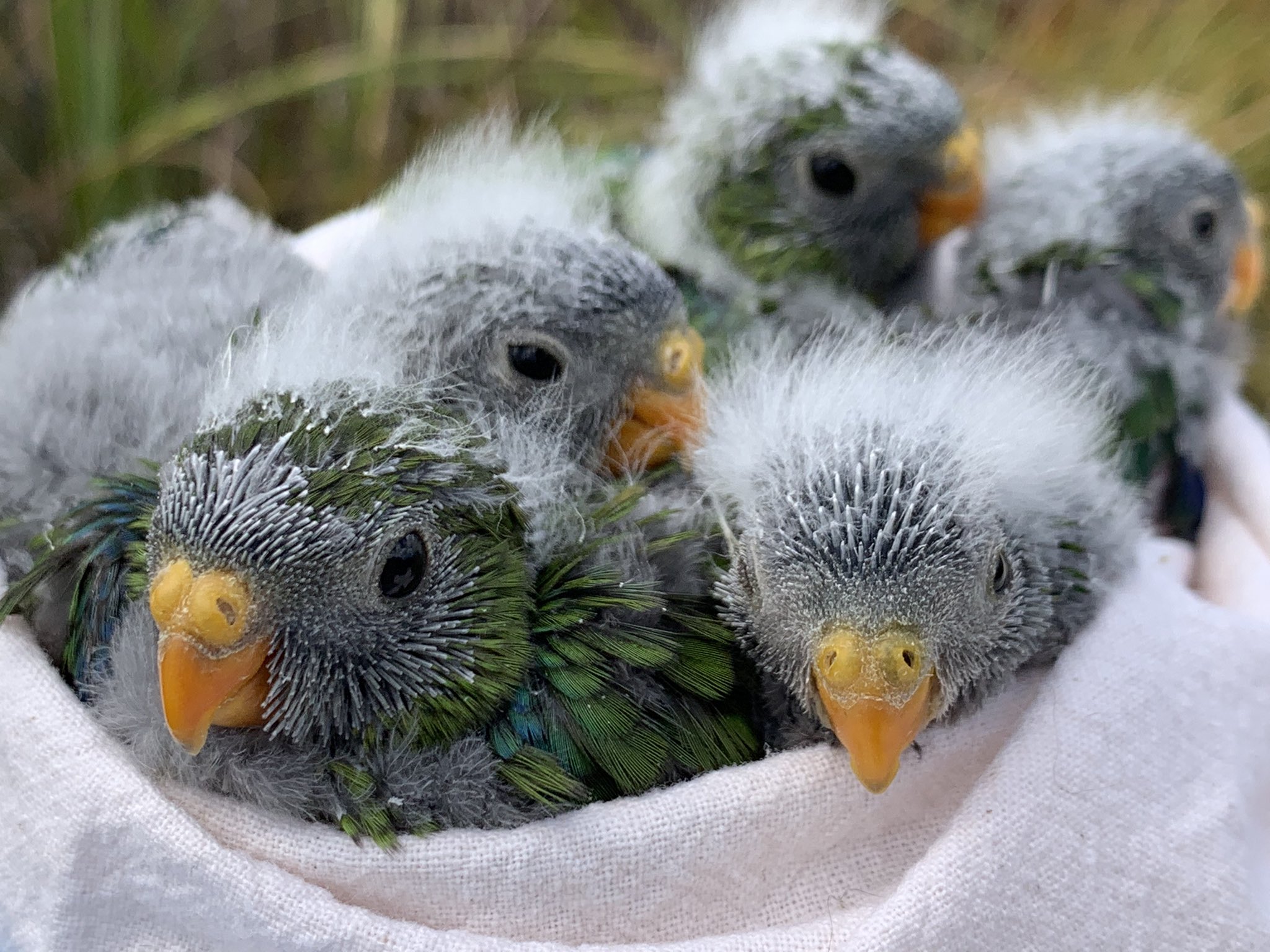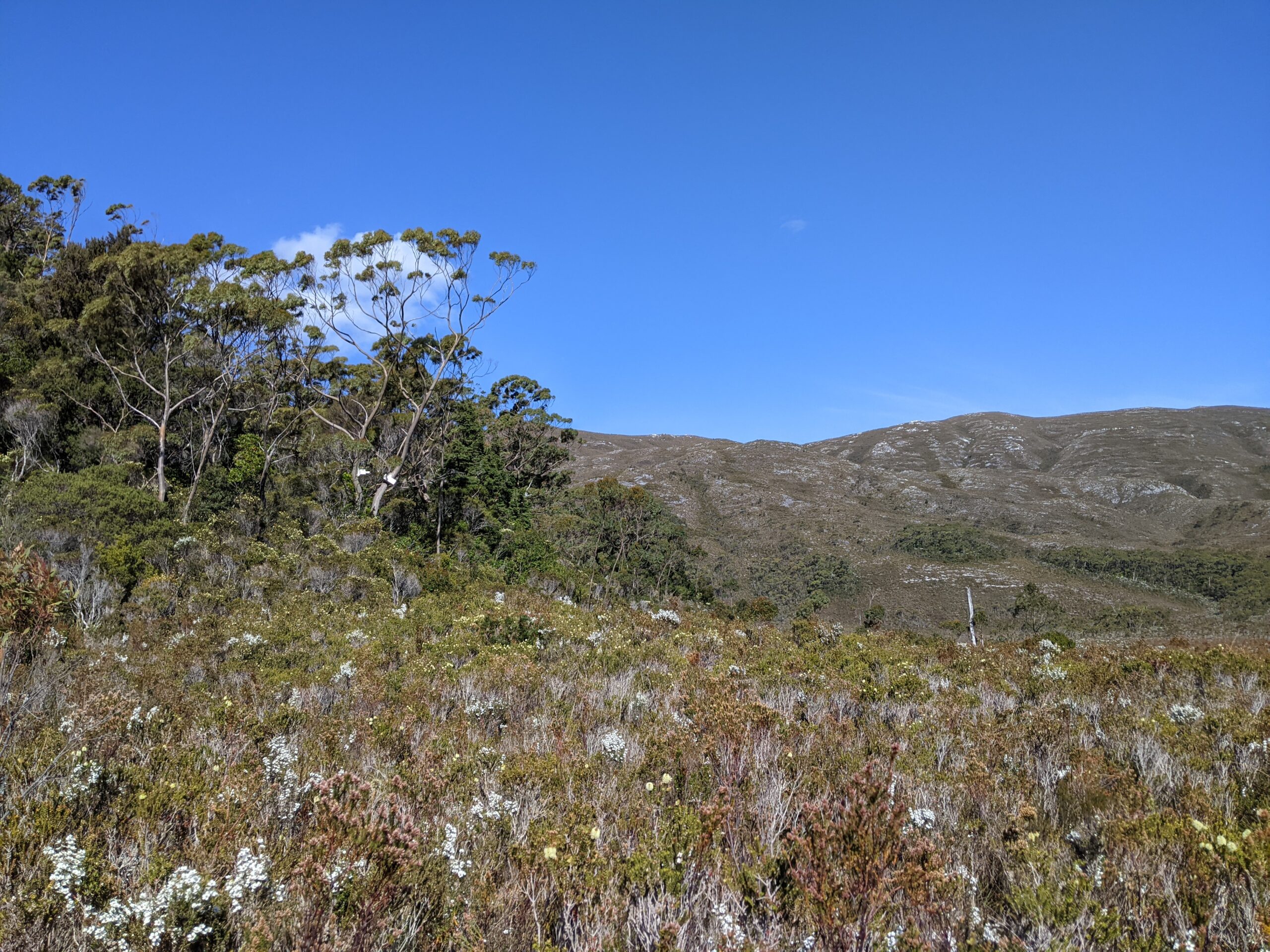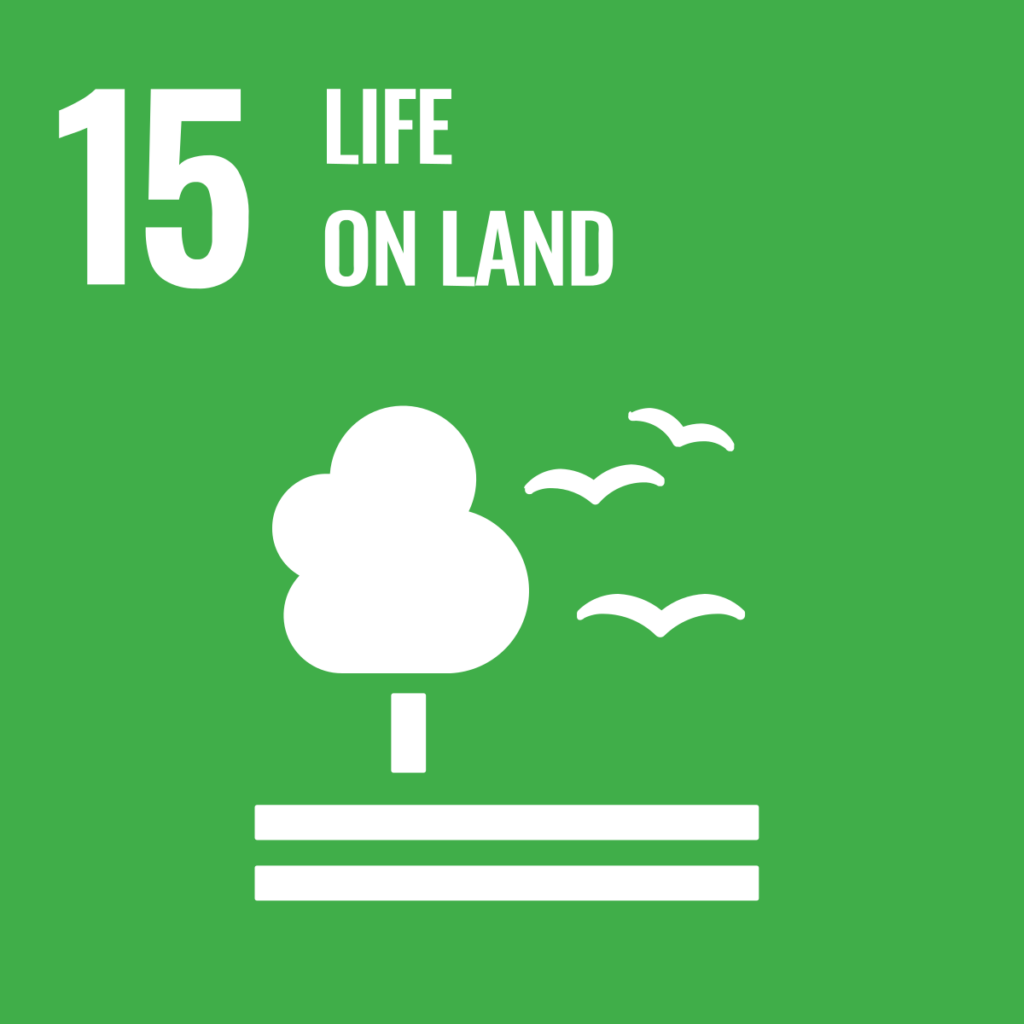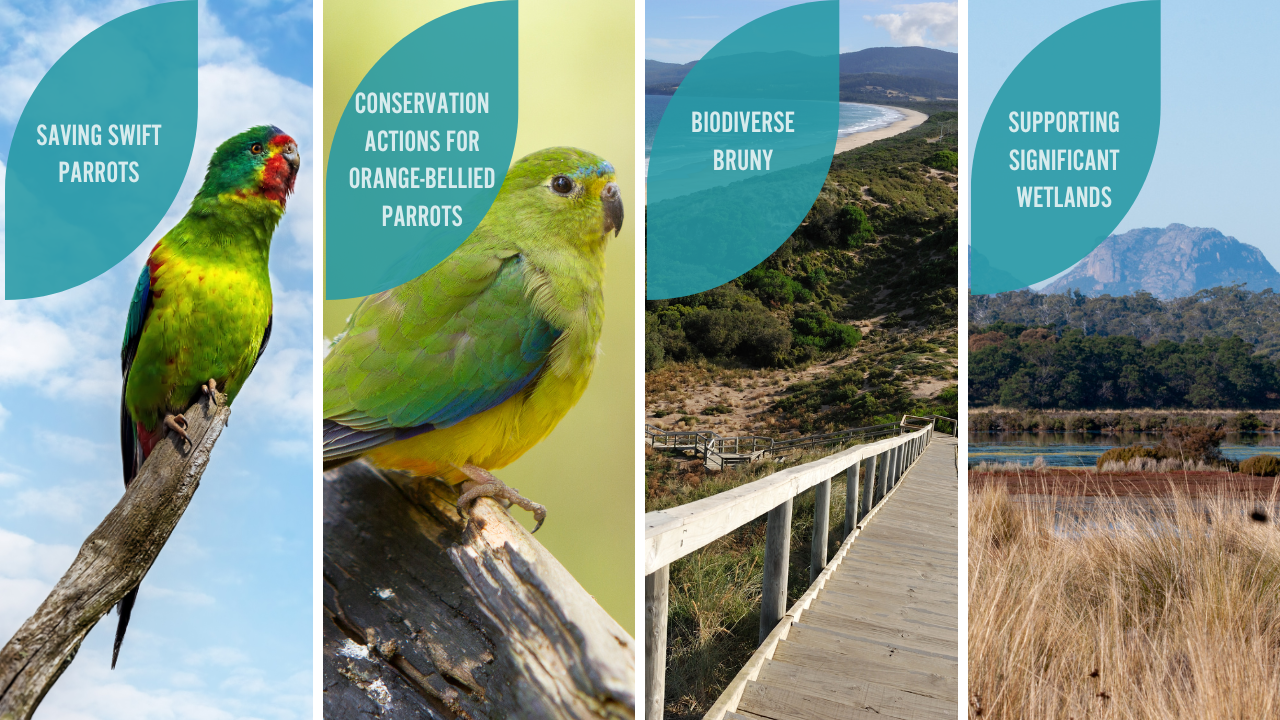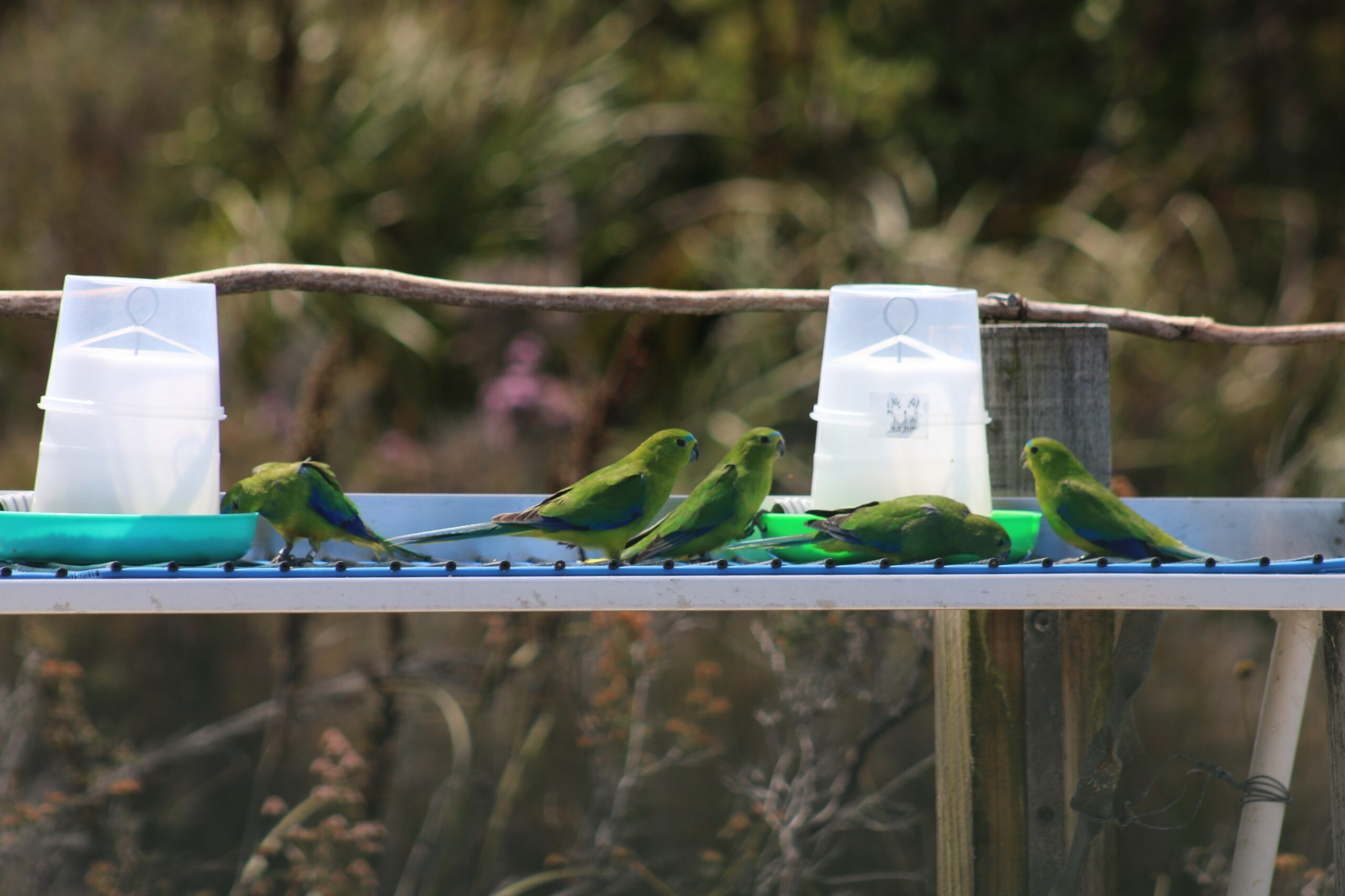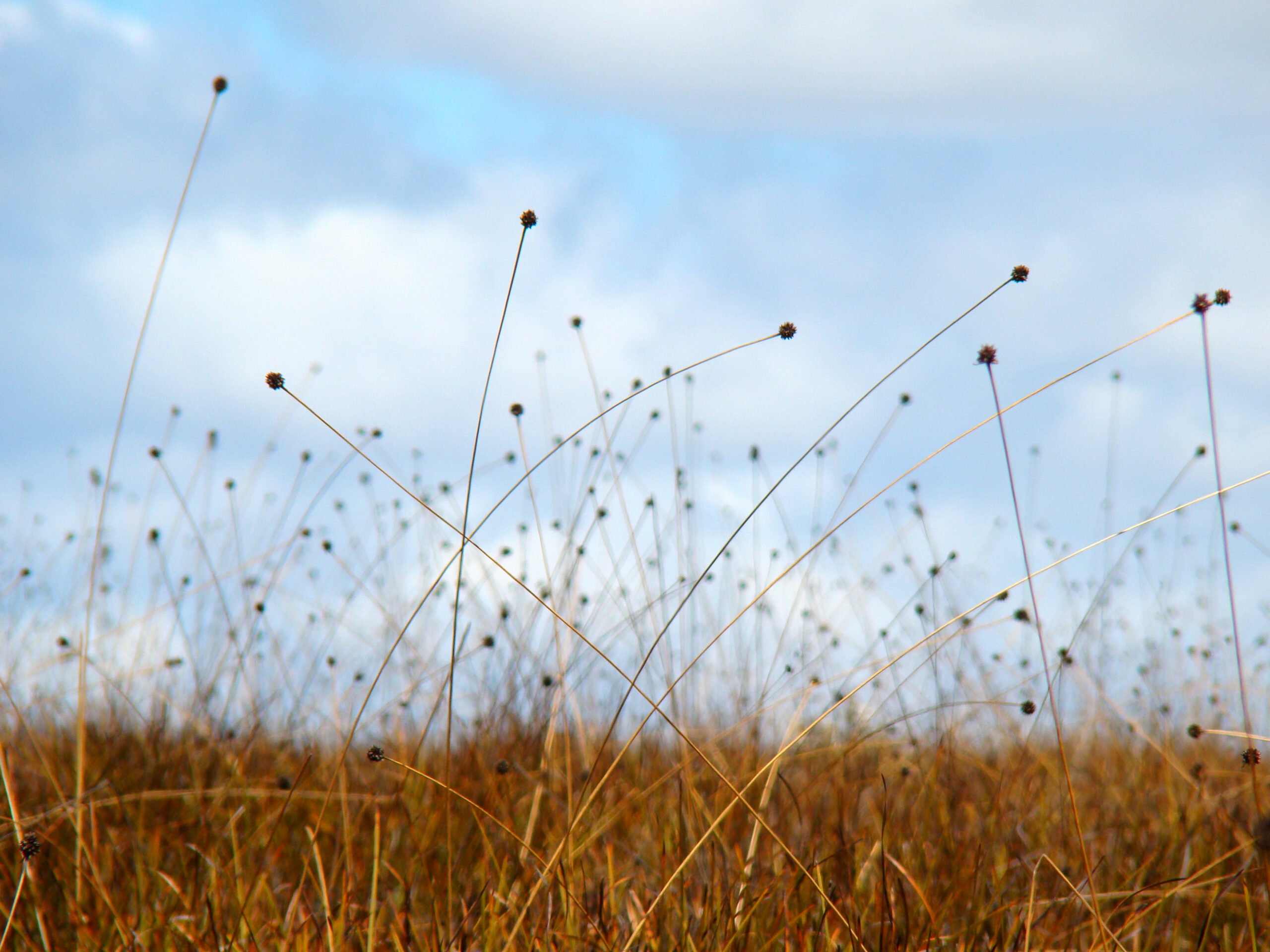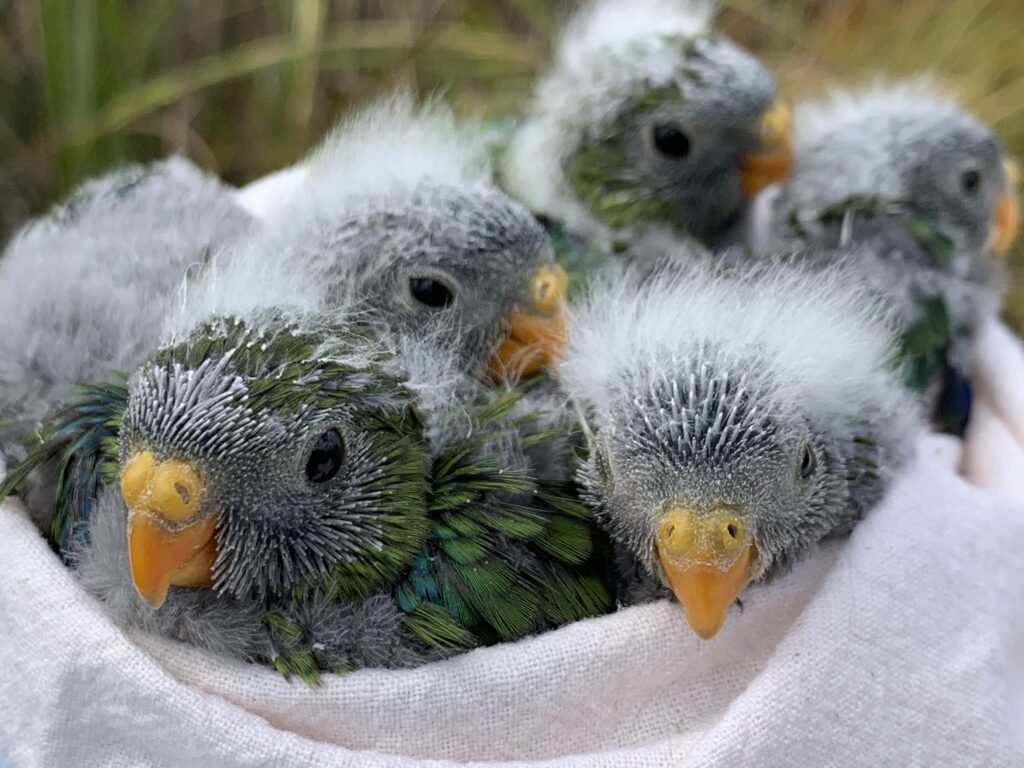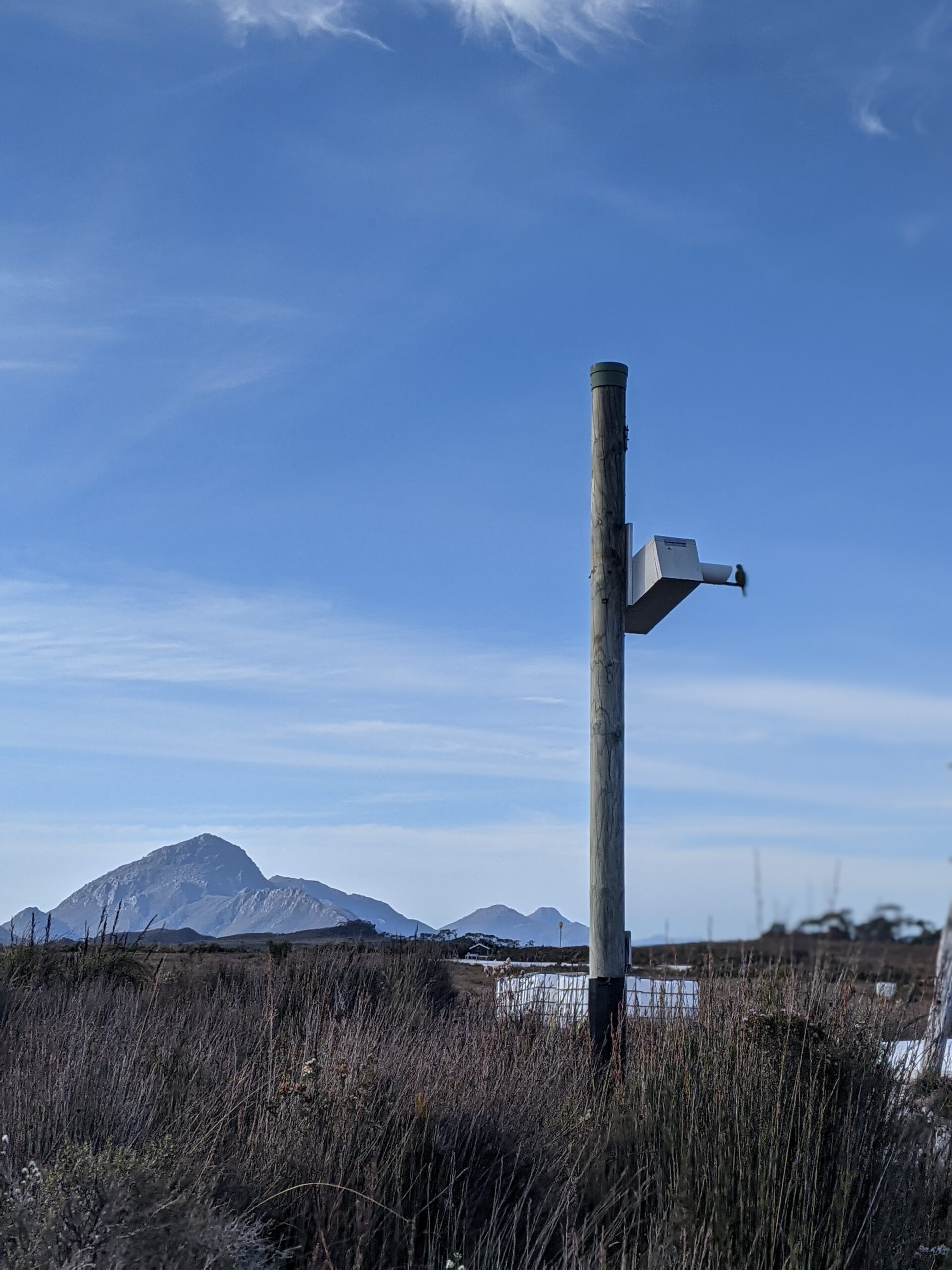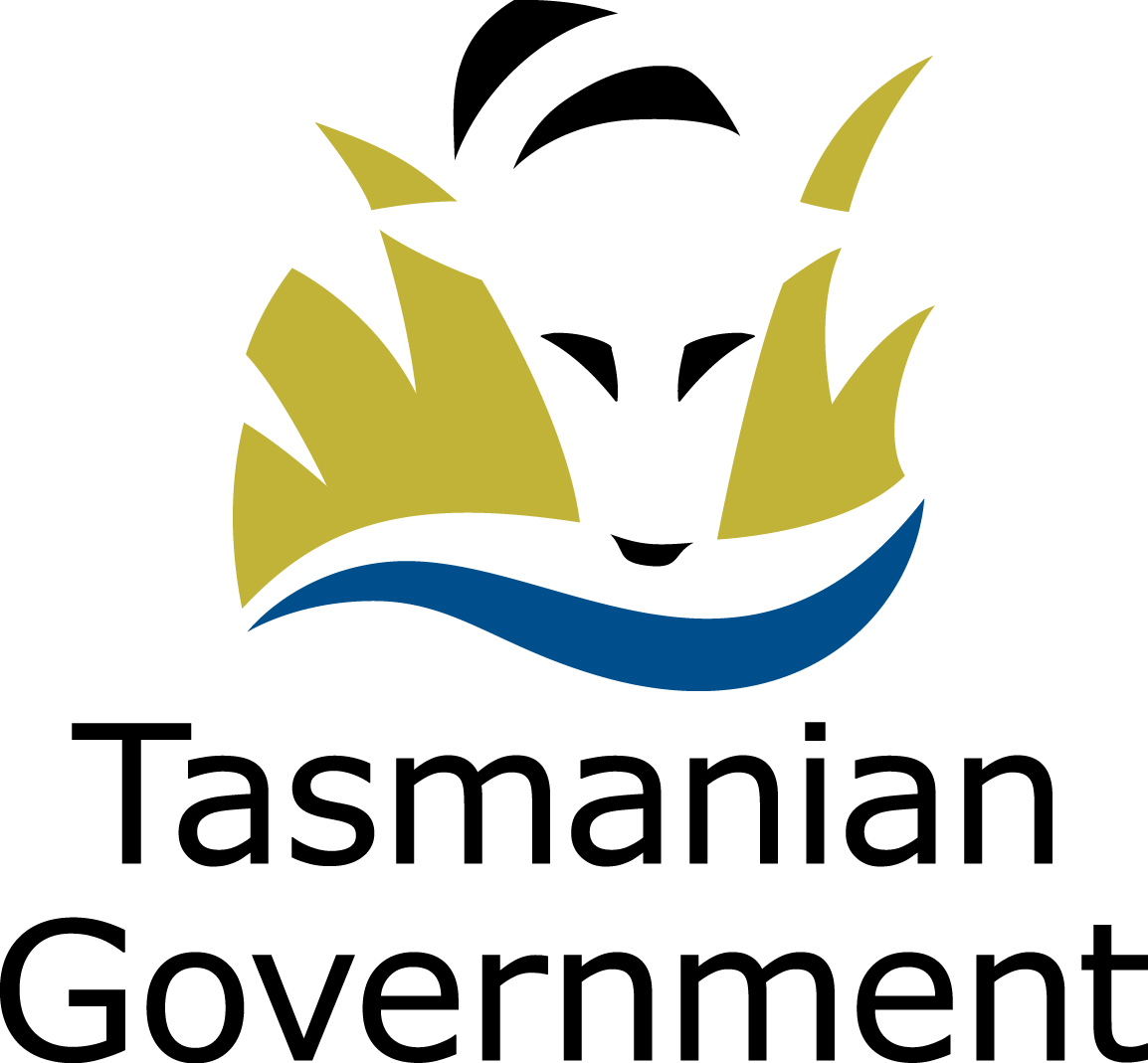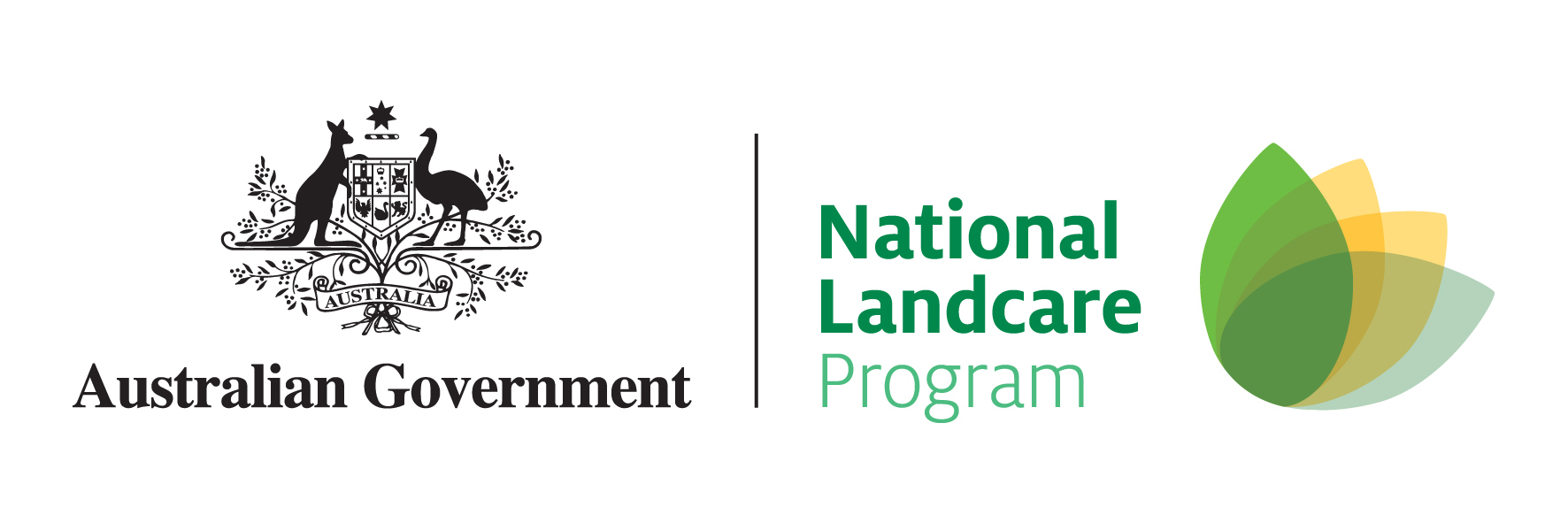Orange-bellied Parrot Recovery
The critically endangered Orange-bellied Parrot is one of 100 priority species under the Australian Government’s Threatened Species Action Plan. Wild populations have been reduced to a single population that only breeds in one site in southwest Tasmania, migrating annually along the Tasmanian west coast between Tasmanian and coastal Victoria and south-eastern South Australia.
From 2021 – 2023, NRM South worked with project partners on two complementary projects that aimed to improve conservation outcomes for Orange-bellied Parrots in Tasmania.
Our Approach
This project helped recovery efforts for Orange-bellied Parrots (OBPs) by;
- Finding out more about the specific biology and habitat requirements of Orange-bellied Parrots;
- Developing and implementing management strategies to optimise and extend OBP habitat area;
- Improving infrastructure that supports the existing OBP captive breeding program at Melaleuca;
- Supplying additional nesting opportunities within their preferred habitat.
PROJECT PILLARS OBP
Background
Orange-bellied Parrots are at risk of extinction from a range of factors, including their small population size, limited breeding range, migratory behaviours and habitat degradation.
We worked with the Department of Natural Resources and Environment Tasmania (NRE) and the Australian National University (ANU) to secure the future of critically endangered Orange-bellied Parrots. The two complementary projects aimed to find out more about the specific biology and habitat requirements of Orange-bellied Parrots, develop and implement management strategies to optimise and extend their habitat area, improve infrastructure that supports the existing OBP captive breeding program at Melaleuca and supply additional nesting opportunities within their preferred habitat.
Project 1: Priority investigations to support OBP recovery
NRM South supported ANU and NRE Tasmania in their efforts to identify new captively bred birds release sites, enhance the provision of food resources through fire management, and evaluate how different threats and management interventions may affect their extinction risk. The results of this analysis are being used to inform how best to manage this species into the future.
This 18-month project delivered;
• An Orange-bellied Parrot Population Viability Analysis (a tool that helps forecast future population trends based on different scenarios);
• An assessment of a second captively bred release site in the hope this will result in the establishment of a second Orange-bellied Parrot breeding population in southwest Tasmania; and
• Planned burns to improve the abundance and availability of food plants for Orange-bellied Parrots in southwest Tasmania.
Project 2: Further support for OBP recovery
Orange-bellied Parrots breed within a single area in south-west Tasmania (Melaleuca), and efforts to boost and protect this species have been ongoing for many years.
While it is hoped that their precariously low numbers are beginning to recover as a result of these ongoing efforts, their chances of success have been improved by repairing and installing new nest boxes at their breeding site and expanding the potential breeding range.
This project provided additional nest boxes in the Melaleuca valley with the aim of increasing (or at least maintaining) the number of wild-raised OBPs. Population monitoring will determine how effective these changes have been. At the same time, ANU will conduct a detailed assessment of the availability of tree hollows as nesting sites at Melaleuca and assess the impact of various land management scenarios on OBP habitat.
The project is made up of four distinct subprojects. Three subprojects were led by NRE Tasmania and oversaw the following activities;
1) improving nest management and monitoring,
2) improving critical infrastructure in the current nesting area, and
3) extending the area over which nesting infrastructure is provided to support breeding.
The final subproject was a research component led by the Australian National University. It assessed the availability of natural tree cavities for Orange-bellied Parrot nesting, and what factors play a role in nesting hollow suitability for OBPs.
Project achievements
- The final report on the burning regimes was delivered. It found that there was a positive impact of low-intensity burns on the abundance and flowering of herbaceous species, but this effect waned after ten years. They found that patchy mosaic burning in the OBP foraging habitat and the development of burn intervals was important. Reducing the reliance on supplementary feed would be a critical milestone in wild OBP management.
- An OBP Population Viability Analysis (a tool that helps forecast future population trends based on different scenarios) was completed. It found increasing the number of juveniles into the population each year would have most benefit.
- A research project led by ANU assessing the availability of natural tree cavities for OBP nesting, and what factors play a role in nesting hollow suitability for OBPs has been completed.
- The final report on the investigations into a new breeding site was completed. Modelling conducted identified a new key site, and two other potential sites. A release plan was also developed for the species to maximise success.
- Expanded nest boxes. Due to the lack of available nesting cavities to Orange-bellied Parrots, artificial nest-boxes have been installed within their only known remaining breeding location. Through this project, over a 2-year period, a total of 60 new nest-boxes have been installed, expanding the previous range of original nest-boxes. There are now a total of 150 nest-boxes available to OBPs within the Melaleuca and surrounding area.
- Replacing the hide, aviary and feed table. These are being constructed and will be installed at Melaleuca later in 2023 to assist with the breeding and monitoring program.
Project Achievements
Report on burning regimes completed
Population viability analysis completed
Nesting hollow suitability report completed
Site modelling completed
60 new nest boxes installed
Hide, aviary and feed table replaced at Melaleuca
What's Next
These projects ran until June 2023. Orange-bellied Parrots have been identified as a priority species in our regional strategy and we hope to continue work to support this species.
